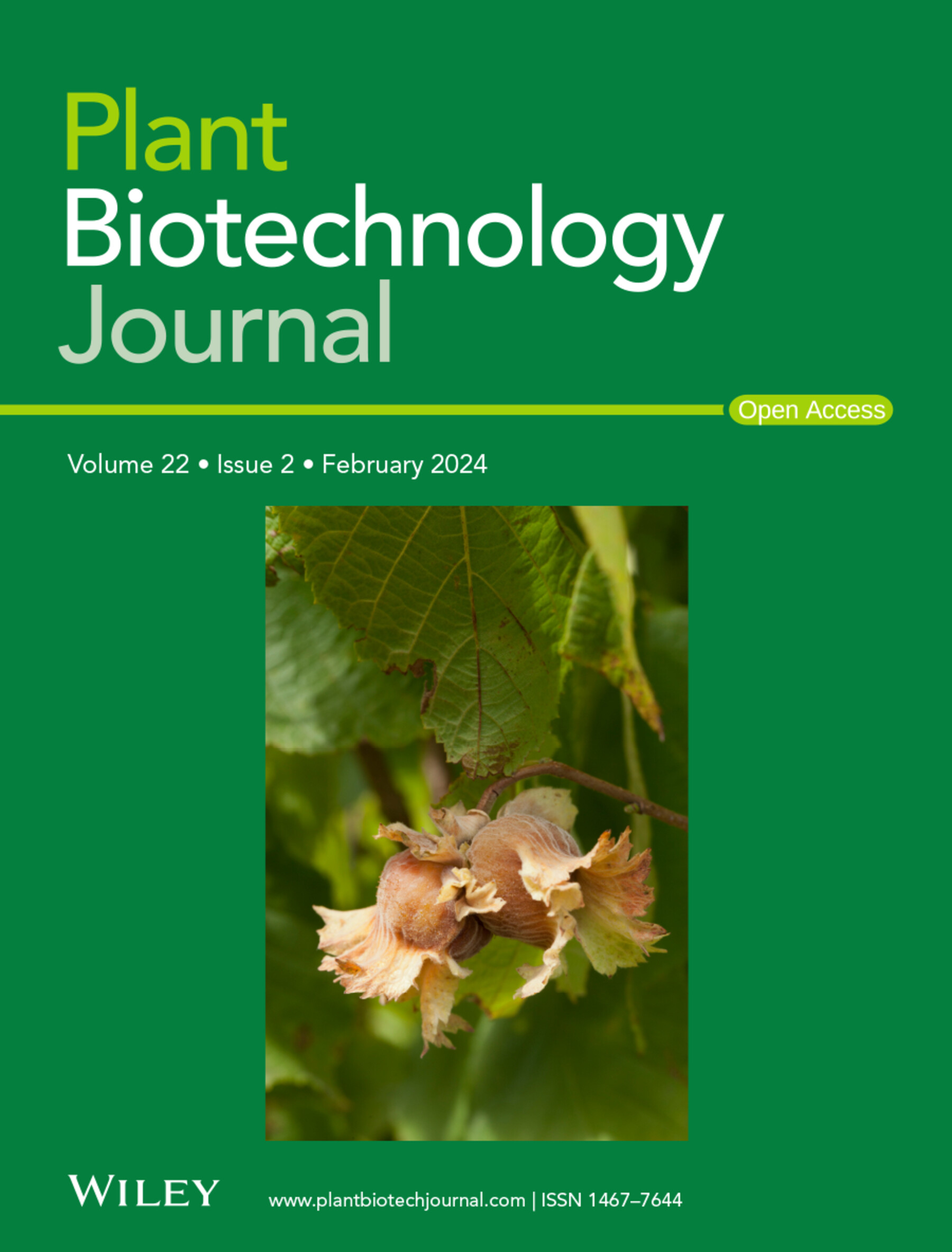Characteristics and Molecular Mechanism of Slow Vegetative Growth in Hexaploid Transgenic Poplar 741 With an Insect‐Resistance Gene
IF 10.1
1区 生物学
Q1 BIOTECHNOLOGY & APPLIED MICROBIOLOGY
引用次数: 0
Abstract
Polyploid plants frequently exhibit altered vegetative growth, yet the molecular mechanisms remain unclear. This study reveals that hexaploidisation of triploid insect‐resistant poplar 741‐line Pb29 significantly reduces growth rate, leaf area, photosynthetic capacity and organic matter accumulation. Meanwhile, the degradation of auxin and gibberellic acid accelerated, the abscisic acid content increased, and insect resistance was diminished with the increase in ploidy. Comprehensive multiomics analysis elucidated the molecular mechanisms underlying the slow vegetative growth of hexaploids. Transcriptome analysis demonstrated reshaping of vegetative growth‐associated networks, manifested as reduced photosynthetic capacity and increased energy consumption, which ultimately reduced the energy available for vegetative growth. Differential expression of miR319, novel‐m0126‐5p and ptc‐miR6427‐3p altered the transcription levels of vegetative growth‐related genes. The genome of hexaploids exhibited significantly elevated DNA methylation levels, and significant changes in DNA methylation levels in vegetative growth‐related specific regions can affect the growth and development of hexaploids. Notably, we identified an ethylene response factor gene,转抗虫基因六倍体杨树741营养生长缓慢的特性及分子机制
多倍体植物经常表现出营养生长的改变,但分子机制尚不清楚。研究表明,三倍体抗虫杨741系Pb29的六倍体化显著降低了生长速率、叶面积、光合能力和有机质积累。同时,随着倍性的增加,生长素和赤霉素的降解加快,脱落酸含量增加,抗虫性降低。综合多组学分析揭示了六倍体营养生长缓慢的分子机制。转录组分析表明,营养生长相关网络的重塑表现为光合能力降低和能量消耗增加,最终减少了营养生长所需的能量。miR319、novel‐m0126‐5p和ptc‐miR6427‐3p的差异表达改变了营养生长相关基因的转录水平。六倍体基因组DNA甲基化水平显著升高,营养生长相关特定区域DNA甲基化水平的显著变化会影响六倍体的生长发育。值得注意的是,我们在营养生长调节网络中发现了一个乙烯反应因子基因,ERF016‐like,进一步的实验表明,ERF016‐like通过改变光合作用产生的糖的积累、ATP的产生和对生长素的反应,对植物的营养生长产生负调控。综上所述,六倍体营养生长缓慢是多水平分子调控网络相互作用的综合表现。这一现象与基因表达网络的调整、转录后miRNA调控的变化以及表观遗传修饰有关。这些复杂的调控机制共同导致了六倍体缓慢的营养生长和发育特征。
本文章由计算机程序翻译,如有差异,请以英文原文为准。
求助全文
约1分钟内获得全文
求助全文
来源期刊

Plant Biotechnology Journal
生物-生物工程与应用微生物
CiteScore
20.50
自引率
2.90%
发文量
201
审稿时长
1 months
期刊介绍:
Plant Biotechnology Journal aspires to publish original research and insightful reviews of high impact, authored by prominent researchers in applied plant science. The journal places a special emphasis on molecular plant sciences and their practical applications through plant biotechnology. Our goal is to establish a platform for showcasing significant advances in the field, encompassing curiosity-driven studies with potential applications, strategic research in plant biotechnology, scientific analysis of crucial issues for the beneficial utilization of plant sciences, and assessments of the performance of plant biotechnology products in practical applications.
 求助内容:
求助内容: 应助结果提醒方式:
应助结果提醒方式:


